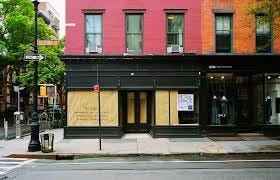This month is the re-launch of Everybody Innovates Here, my book that explains why so many of our innovation and entrepreneurship ecosystems fail to move the needle for our communities, and what we have to do to make them work the way they should. You’ll see posts and videos about Everybody Innovates Here across your socials this month. And Change Maker (paid) subscribers to Future Here Now will receive a code for a hefty discount on the book and on workshops on July 18!
This book never got the daylight it deserved thanks to COVID, and I’m thrilled to be able to share it. If you are not a Change Maker subscription, you can get that discount code too – all you have to do is sign up before Friday! And to sweeten the deal, I’ll give you 25% off that subscription – but it won’t last long!
Yesterday we explored why our current “ecosystems” – entrepreneurship, innovation, and even downtowns and neighborhood centers – aren’t working, and especially aren’t working for the people we most need to be participating in them. Today’s Signals gives you a few points to consider when thinking about the reality that our “ecosystems” have to operate within. Most of these factors look discouraging, if not downright scary. But we have to see what’s actually going on before we can figure out how to make them work the way we need them to.
Venture Capital has largely stopped working
For more than a decade, startup ecosystems all over the country have been touting their relationships with venture capitalists. We get panels at Start Up events that tell us what VCs are looking for, how to fight for a scrap of their attention, how to get them to believe in your vision and you. But the uncomfortable truth is that the VC model has been crumbling since before COVID – and the pandemic accelerated that.
The VC model faces multi faceted challenges, ranging from Big Tech acquisitions to over inflated values and well-documented inherent biases among the purse holders. But the fact of the matter is that the VC model is designed for a very specific situation – the fact that the ideal VC prize is often described as a “unicorn” tells us a lot.
Most of the businesses in our ecosystems are not unicorns. They’re more real and accessible than an imaginary creature. So why do so many of our ecosystems bend the knee to VCs?
All those empty storefronts
This article is a couple of years old, and I am thoroughly sick of dogging on San Francisco. But even though SF is the case study at play here, the story could have been written in any of the dozen central commercial districts, large or small, that I’ve spent time in during the last two years. The National Main Street Center and some other sources have provided ideas for managing this issue, but it evades easy and meaningful solutions. Just like VC-dependent tech startups, downtown storefront occupants have been caught in the backwash of change – and those who were told to “wait until things get back to normal” are realizing that the glut of downtown storefront space needs an entirely new approach.
The power – and unrealized potential - of Black-owned businesses
This article is long and dense with information, but it’s worth spending time with. As I have argued elsewhere, Black entrepreneurs have been responsible for an incredible array of innovations, and it has often been their unfair experience of being marginalized that has allowed some individuals to perceive opportunities that their more privileged compatriots missed.
But a disproportionately high number of Black entrepreneurs remain at the self-employment level (“non-employer” in the terminology of the Fed). While some people certainly choose to stay at that level, this indicates that we are probably missing out on the job and wealth generation, and the impact, that these businesses could make if more of them were able to become employer firms. That is a massive opportunity cost, and one that we cannot afford in an era where we all need their insights.


